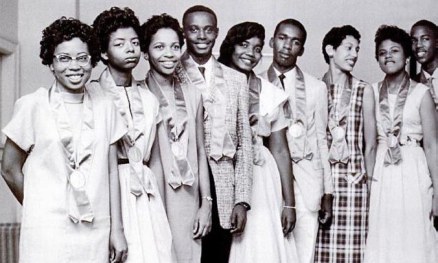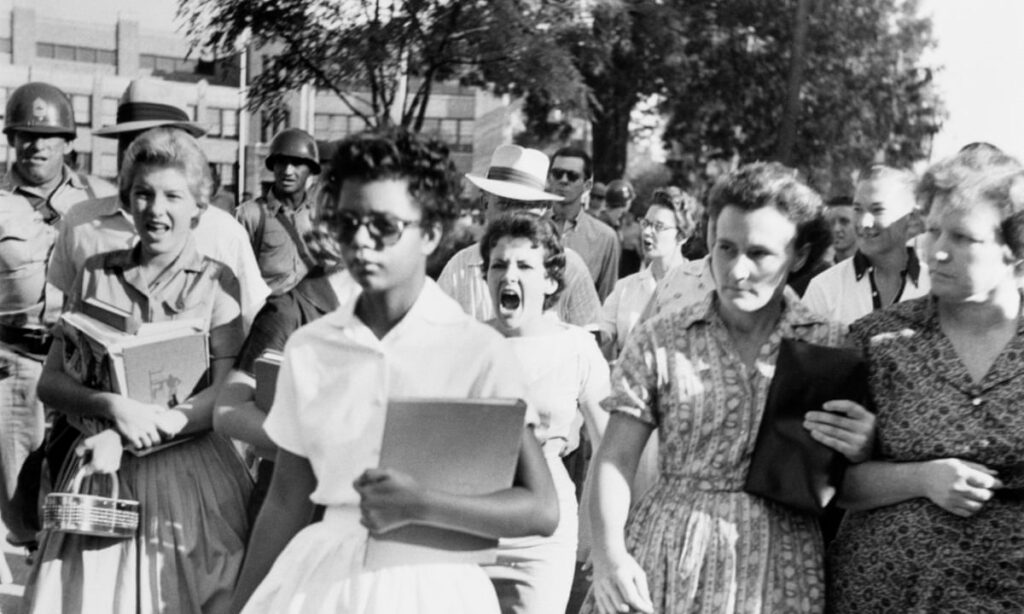ASHLEY HALM
Special to The Leader

As students and young people are becoming more actively involved in American politics in order to better advocate for their own interests, high school and college students have begun to widely question the legitimacy and validity of the lessons they have been taught about the nature of activism by young people.
Beyond setting a precedent for the enforcement of Brown v. Board of Education in schools and public facilities across the country, which in turn sparked the civil rights movement of the ‘60s, the Little Rock Crisis of 1957 was instrumental as an example of one of the first widely successful non-violent protests by young people during the movement.
One of the more famous flaws in the Brown v. BOE decision was that it did not provide a specific timeline on which national school desegregation would occur, opting instead to give state government leaders a “nebulous directive of ‘all deliberate speed’” to complete the long process of desegregating schools.
In Little Rock, AR, this allowed the superintendent of the Little Rock school district to placate white parents and segregationists by pushing back the tentative date for integration to 1957 and only allowing “good Negro” students who showed exceptional “intelligence, character and health” to attend the all-white Central High School.
As often taught in American high schools, nine Black students persisted and attempted to attend the first day of school at Central High School, only to be blocked from entering by National Guard troops sent by Gov. Orval Faubus.
They were harassed and spat at by a mob of white parents and students.
One student, Elizabeth Eckford, was threatened with lynching by the mob so harshly that she had nightmares for weeks after.
The image of her facing the white mob has since become synonymous with the incident and the early civil rights movement as a whole.

Two weeks later, the students attempted to enter again, this time escorted by troops dispatched by President Eisenhower, and they successfully enrolled, earning them the title of the Little Rock Nine.
Just six years after the success of the Little Rock Nine, students in Birmingham, AL led a march to protest the continued segregation of southern schools, despite Brown v. BOE and numerous successful court cases.
Over the course of a few days of protesting, many students were arrested, “knocked down in the streets by torrents of water from fire hoses wielded by white policemen [and] were hit with batons or set upon by police dogs.”
Later, throughout the civil rights movement of the ‘60s, student activists staged countless sit-ins and boycotts, and they endured unnatural verbal harassment and physical violence.
Nevertheless, they persisted, unswaying in their dedication to their cause.
This past June, thousands of students from Seattle skipped school to lead their own march, inspired by the Birmingham Children’s Crusade in 1963, to protest racial injustice, segregation and police brutality.
This continuing thread of young people taking decisive action to affect change in issues where older generations have failed is proof that activism and leadership by young people is a vital component in the initial and continued generational success of movements for social justice.
I don’t believe the Little Rock Nine intended to “make a political statement” or become symbols of the civil rights movement.
They all came from middle class families and simply wanted to attend the best available school to advance their education and futures within a national system that only valued them for how well they could succeed in comparison to their white peers.
Even so, they inspired countless young people to get involved with a movement that continues to shape the fate of our nation.
Last fall, I asked gun control activist Cameron Kasky if he had any insights or advice for young people trying to be taken seriously and have their concerns listened to by older, more traditional leaders and politicians.
He responded, “When politicians look at you, they don’t see the struggles you’ve dealt with or the hard work you’ve done; they only see ‘young’ and ‘woman.’ Instead of letting them use those labels against you, you have to use the labels and what you’ve learned from living them to force them to listen to you.”
While I did not fully understand this message at the time, I know now that I, and all young people struggling to have their voices heard and their work taken seriously, must be willing to engage with history through a critical lens and through the lens of our own personal struggles growing up in an increasingly violent and politicized environment.
By doing this, we’ll be able to draw our own conclusions about the way that the country can and should be run.
After all, we are this country’s future leaders, and with Election Day coming up, our time to lead is coming very soon.
